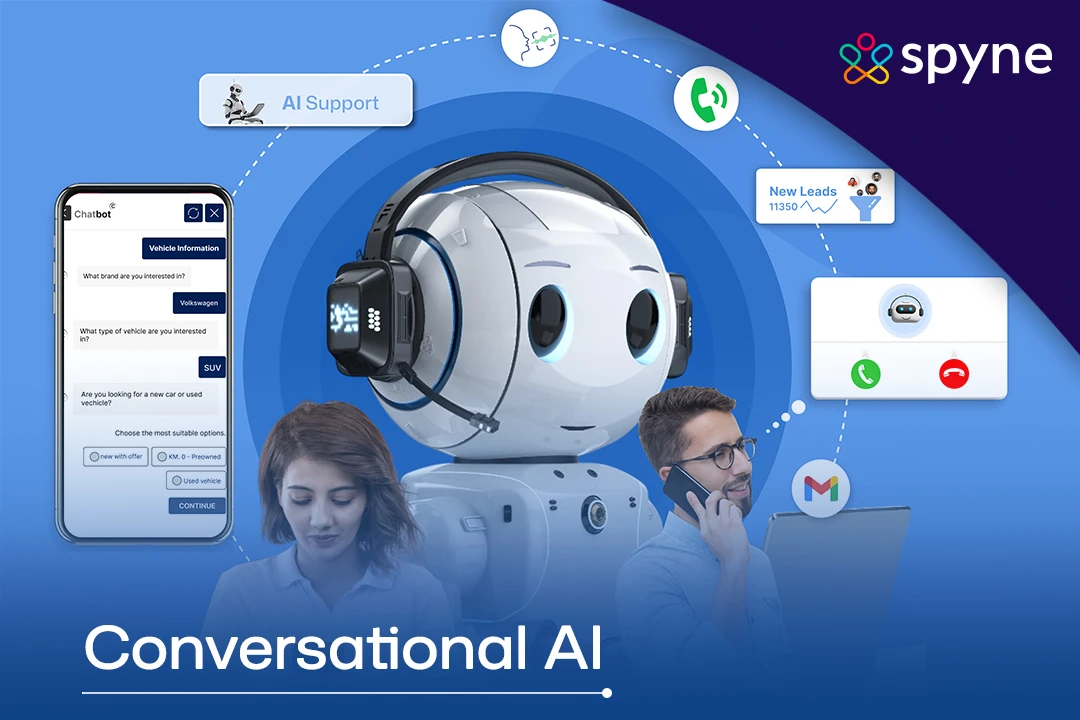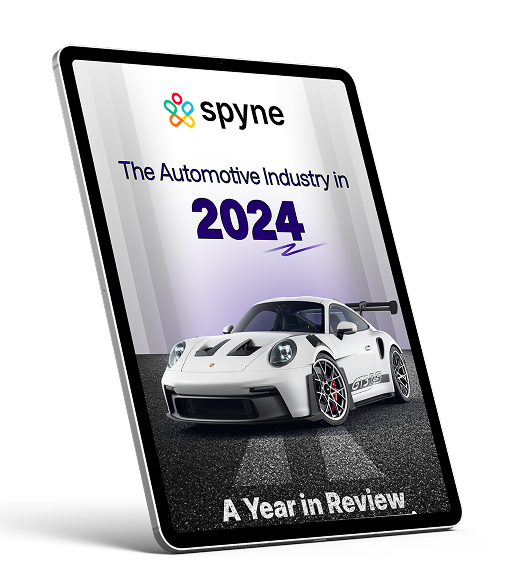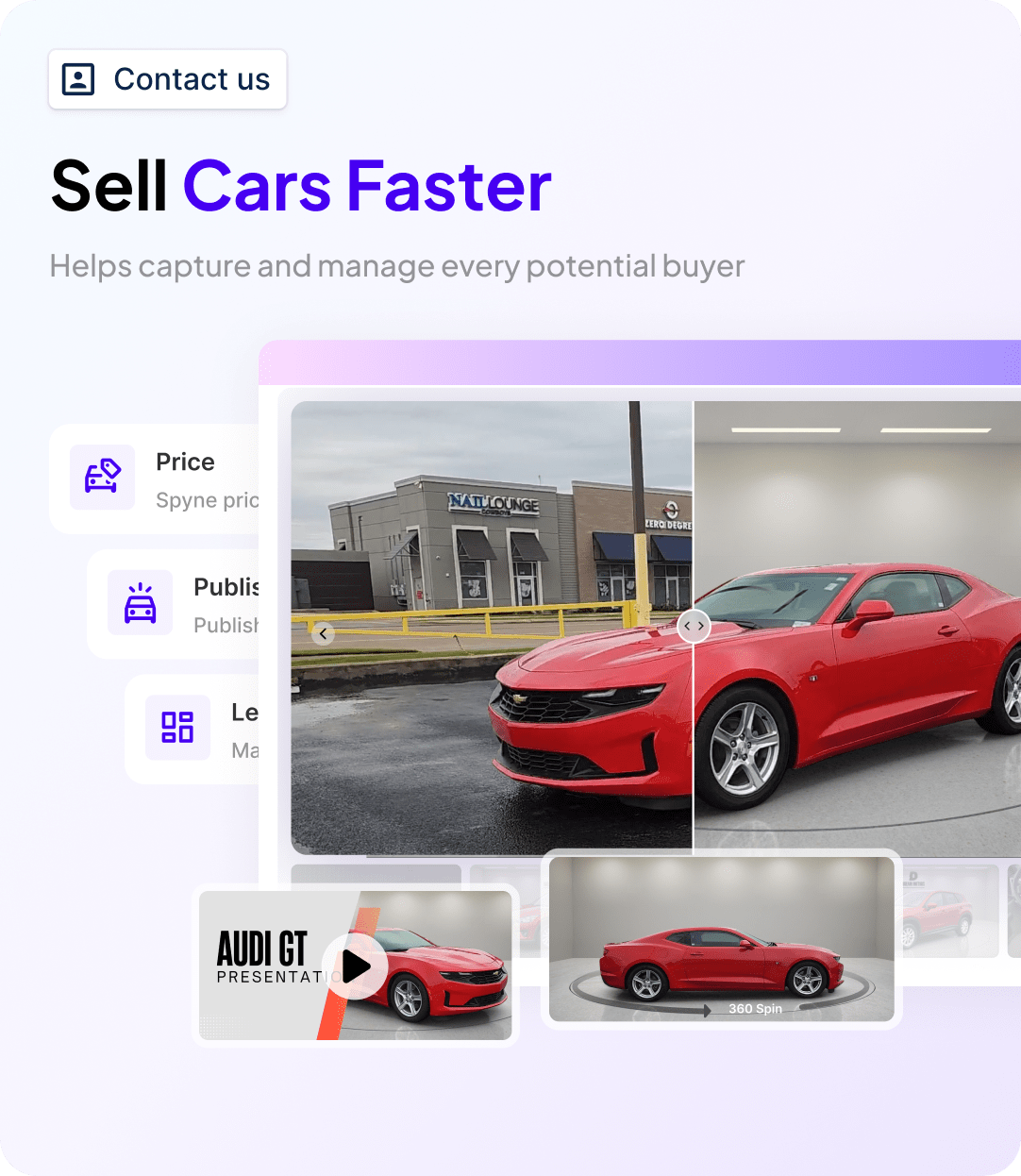Businesses today need quick and easy ways to talk to their customers. People no longer want to wait on phone calls or visit the store just to ask simple questions. That’s where conversational AI comes in.
It engages the instant a buyer reaches out, maintains context across channels, and keeps the interaction moving until a human takes over. Whether it’s a free AI chatbot on the website or an AI chatting online feature in your app, it saves time for both the buyer and the business.
This article breaks down how conversational AI works, how it differs from traditional chatbots, and where it creates real operational impact.
What is Conversational AI?
Conversational AI is technology that understands and responds to human language in both text and speech. Instead of depending on predefined scripts, these systems analyze purpose, context, and meaning to move conversations ahead in a way that feels continuous rather than sequential.
Conversational AI uses natural language processing (NLP) and machine learning (ML) to receive inputs, evaluate potential responses, and improve accuracy over time. This enables it to handle open-ended queries, track changes in direction, and adapt to how people actually communicate.
In automotive retail, conversational AI helps teams stay responsive across channels by handling early interactions, preserving context, and assisting buyers as they progress from initial inquiry to decision.
3 Main Components of Conversational AI
Conversational AI depends on three key elements that work together to make interactions feel natural and human-like:
1. Natural Language Processing (NLP)
NLP lets AI understand and generate human language. It interprets meaning, intent, and context from text or voice, then crafts replies that sound natural. Voice inputs are converted to text, responses are generated, and text can even be spoken back, making conversations smooth and intuitive.
2. Dialogue Management (DM)
DM keeps track of the conversation, remembering what was said and guiding the flow. This ensures AI maintains context, responds appropriately, and keeps the interaction coherent from start to finish.
3. Machine Learning (ML)
ML helps the system improve over time. By recognizing patterns and learning from past interactions, AI becomes more accurate, personalizes responses, and adapts to new scenarios without explicit reprogramming.
Together, these three components enable conversational AI to listen, understand, decide, and respond naturally, creating human-like conversation experiences.
How Does Conversational AI Work?
Conversational AI enables devices to interact with people in a way that feels natural. Using Natural Language Processing (NLP), it understands input language and improves with time using Machine Learning (ML). Here’s how it works:
- Capturing Input
Whether you type a message or speak out loud, the system receives your words and converts them into text it can understand. - Understanding Intent
Next, it figures out what you mean and picks out the key details from your message. - Processing & Action
The AI then searches its knowledge base, CRM, or connected tools to find the best answer or solution. - Generating a Response
Finally, it replies in clear, human-like language, either through chat or voice, so the conversation feels smooth and natural.
With each interaction, the system learns from patterns, feedback, and context, gradually getting better at personalizing responses and handling more complex conversations.
Top Benefits of Conversational AI
While conversational AI is frequently characterized in technical terms, the true impact is determined by the results it produces. Below are the advantages businesses typically see once conversational AI becomes part of their daily operations:
1. Improved customer experience
Customers typically become frustrated when they have to wait too long, repeat information, or deal with inconsistent communication. Conversational AI addresses this by responding immediately, maintaining context during exchanges, and adapting to the user’s needs, resulting in smoother, more natural discussions.
2. Reduced operational costs
Many consumer contacts are repetitive and time-consuming. Conversational AI frees up people to focus on higher-value tasks and enables operations to scale during peak periods without increasing headcount.
3. Data-Driven Decision Making
Every interaction provides valuable insights, including frequently asked questions, hesitation points, and engagement trends. Capturing this data enables teams to make better decisions based on actual usage rather than assumptions.
Real-World Use Cases of Conversational AI
The value of conversational AI becomes clear in everyday interactions, where consistency and timing matter more than complexity. The strongest use cases are practical, revenue-adjacent, and already embedded in everyday business operations, including:
- Customer Support & Self-Service
A large portion of support demand is repetitive. Conversational AI handles those routine questions quickly and steps aside when a real issue needs attention, without breaking the flow. - Commerce & Guided Purchasing
Buying journeys are rarely straightforward. Conversational AI fits into that uncertainty by answering questions in context and helping people move forward without rigid paths or filters. - Banking & Financial Assistance
Speed and accuracy matter here. Conversational AI manages everyday requests efficiently, while ensuring sensitive or unclear situations reach a human before trust is tested. - Healthcare Coordination & Support
Most healthcare conversations are logistical. Scheduling, reminders, and follow-ups often cause delays. Conversational AI helps keep these interactions moving without crossing into clinical decisions. - HR & Employee Enablement
Internal questions repeat more than teams realize. Conversational AI acts as a practical reference point, helping employees find answers without tickets or back-and-forth. - Learning & Knowledge Support
Information isn’t always hard to access, just hard to locate. Conversational AI shortens that search by responding directly to what users ask. - Marketing & Sales Enablement
Momentum matters early. Conversational AI keeps conversations active, captures intent as it appears, and prevents interest from fading before follow-up.
6 Challenges of Conversational AI Technologies
Conversational AI delivers significant benefits, but it comes with challenges organizations should be aware of:
- Interpreting Human Language
Nuances like sarcasm, idioms, accents, or extended conversations can lead to misunderstandings, making intent detection less reliable. - Protecting Data and Privacy
AI often handles sensitive information, so strict security and regulatory compliance are essential to maintain user trust. - Managing Bias and Ethics
AI learns from historical data, which may contain biases. Regular monitoring is necessary to prevent unfair or inappropriate outputs. - Integrating with Existing Systems
Connecting AI to CRMs, databases, and other tools can be complex. Smooth integration ensures access to real-time information and seamless operations. - Handling Errors and Unexpected Scenarios
AI may provide incorrect responses or encounter unfamiliar situations. Planning for recovery and fallback mechanisms is critical to maintain confidence. - Ensuring a Strong User Experience
Even capable AI fails if it’s difficult to use. Clear, reliable interactions and intuitive design drive adoption and trust.
Types of Conversational AI
Not all conversational AI systems are built to do the same job. Some are designed for speed and control, while others focus on flexibility and natural interaction. The difference usually comes down to how much intelligence and autonomy the system has.
- Rule-based chatbots: These chatbots work off fixed scripts and decision trees. They’re fast and predictable, which makes them useful for basic questions, but they break down as soon as users phrase things differently.
- Voice assistants: Interaction style matters too. Most users still engage through live chat on websites or apps. Voice assistants remove the screen entirely, while traditional IVR systems rely on menus rather than conversation. Newer platforms blend formats, using text, voice, and visuals together when needed.
- Retrieval-based assistants: These systems don’t “think” so much as search. They scan an existing knowledge base and return the closest possible answer. This works well when information is well-structured and regularly updated.
- AI and natural language systems: More advanced systems rely on AI and natural language understanding. Instead of matching keywords, they try to understand intent. That’s why they can handle vague or incomplete inputs without forcing users down a rigid path.
- Generative AI agents: Gen-AI agents don’t pull answers from a fixed list but generate responses in real time. That makes them better for open-ended conversations, but also harder to control. In practice, many companies prefer hybrid systems that combine rules for stability and AI for flexibility.
However, not every conversational AI replaces humans. Some act as virtual assistants, while others quietly support teams in the background without ever speaking directly to the customer.
Conversational AI vs. Generative AI: What’s the Difference?
Conversational AI is designed to handle customer interactions by understanding intent, maintaining context, and triggering actions like answering questions or booking appointments.
Generative AI, on the other hand, focuses on creating original content using large language models. Simply put, conversational AI drives consistent outcomes, while generative AI enables open-ended, creative responses.
How is Conversational AI Helping Businesses in the Automotive Industry?
Conversational AI doesn’t transform dealership operations overnight but steadily over time. Its real impact shows up in small but critical moments, where conversations either move forward or quietly get lost.
The following areas highlight where conversational AI consistently improves outcomes for automotive businesses, without forcing teams to rethink their workflows:
1. Immediate lead engagement
Most lost automotive leads don’t disappear because of price. They disappear because nothing happened fast enough. Either a message sat unanswered, a call was missed, or a follow-up came too late.
Conversational AI fills those gaps not by selling, but by responding. Through tools like automated lead follow-up systems, it acknowledges inquiries immediately across automotive text messaging and live chat channels, keeps the conversation alive, and buys time until a human representative can step in.
2. Early identification of the buyer’s intent
Sales teams spend a significant amount of time figuring out whether a lead is serious. Conversational AI shortens that process by qualifying conversations early, similar to how a well-run automotive BDC would prioritize incoming demand.
3. Consistent context across channels
Repeating the same information across chat, calls, and follow-ups frustrates buyers more than anything else. Conversational AI helps prevent that by carrying details forward across conversations using automotive chat software that unifies chats across channels.
4. Managing high inquiry volumes without workflow disruption
When inquiry volume increases, most dealerships don’t want to overhaul their processes. Conversational AI works quietly alongside existing teams, handling repetitive interactions like availability questions, appointment confirmations, or basic follow-ups. Offloading these tasks creates breathing room without disruption.
Key Market Trends in Automotive Conversational AI
The evolution of conversational AI in automotive has been shaped by challenges dealers face, such as more digital leads, fewer hands to manage them, and rising expectations for instant responses. As a result, conversational AI is moving closer to the operational core of dealerships.
Here are a few market shifts happening in automotive conversational AI:
- More Relevant Interactions: Using intent detection and contextual learning, systems adjust responses based on past behavior, timing, and conversation history.
- Embedded Assistance: Through deeper integration with internal platforms and connected systems like AI call bots, support moves closer to where actions actually happen.
- Human-Like Conversations: With generative language models and improved speech processing, conversations sound less scripted and more fluid.
- Predictive Support: Call center software provides assistance that increasingly surfaces before a problem escalates, not only after it appears.
- Omnichannel Continuity: Context carries across automotive live chat, voice, and app interactions, with smooth transitions to human teams when needed.
- Operational Proficiency: Routine questions and actions are handled automatically, easing workload pressure and improving automotive lead response.
- Ethical AI & Privacy: Protecting privacy and avoiding bias is built into the system, so interactions feel safe and trustworthy.
- Connected Experiences: With Internet of Things (IoT) and connected vehicle technology in place, interactions now extend beyond a single interface, linking devices and environments into one flow.
Conversational AI Applications in the Automotive Sector
Conversational AI is transforming how automotive businesses engage buyers and manage operations. By automating routine tasks and offering instant guidance, it ensures smoother customer experiences while allowing teams to focus on higher-value work.
Pre-Purchase & Sales
Before a sale, AI can quickly identify high-intent buyers and recommend vehicles, features, or accessories that match their needs. It guides customers through virtual showrooms, assists with vehicle configuration, and automates test drive bookings with reminders to reduce no-shows using call tracking. Location-based features help buyers find the nearest dealership or service center, simplifying the discovery process.
In-Car & Ownership Experience
After purchase, in-car voice assistants provide real-time information on navigation, vehicle health, and digital manuals. AI anticipates maintenance needs and sends reminders, while chatbots help troubleshoot minor issues and assist in finding or ordering parts and accessories, making ownership easier and more convenient.
After-Sales & Support
Conversational AI also supports customers beyond the showroom. It handles common queries like warranties and service status, manages appointments, and operates 24/7 for consistent support. Insights from these interactions help dealerships refine offerings and improve the overall customer experience.
Operational Benefits
For dealerships, AI reduces costs by taking on repetitive tasks, increases operational efficiency by freeing staff for strategic work, strengthens loyalty through faster responses, and integrates with automotive CRM systems to turn customer data into actionable insights.
Case Study on Conversational AI in the Automotive Industry by Spyne
Spyne is an automotive AI platform providing conversational intelligence purpose-built for dealership environments with complex, high-throughput customer interactions. As part of its conversational AI offering, Spyne provides Vini, an AI receptionist built specifically for automotive dealership workflows, where response speed, context, and consistency matter more than scripted interactions.
How One Dealer Group Stopped Leads from Slipping Away
Midwest Dealer Group (MDG) struggled with unanswered inquiries. On an average day, each store missed several calls, and nearly half of the after-hours inquiries went unanswered. Without a structured follow-up process, sales opportunities were often lost before teams could respond.
Spyne deployed Vini, the conversational AI agent, across all five rooftops to close these gaps. Instead of relying on callbacks, Vini engaged with every inquiry instantly, day or night. It integrated with existing systems and the CRM, ensuring conversations weren’t dropped due to limited staff availability.
What Changed Once AI Took Over the First Touch
The most immediate change was coverage. 100% of incoming calls were handled, including after hours. This eliminated blind spots and gave teams clearer visibility into demand.
With Vini managing first-touch engagement, follow-ups became consistent. Unified talking points tied to inventory and offers ensured customers received accurate information, while sales teams entered conversations with context instead of starting from scratch.
Real Results That Were Hard to Ignore
Midwest Dealer Group saw clear outcomes:
- All incoming calls were covered
- Lead conversion more than doubled
- After-hours inquiries were handled without delay
- Sales showed a noticeable uplift within weeks
Why This Matters for Automotive Teams
For Midwest Dealer Group, conversational AI acted as a reliable first responder. This kept their leads warm, reduced response gaps, and improved daily sales workflows.
Easy Steps to Build a Conversational AI for Your Dealership
Building conversational AI for your dealership should feel like fixing broken conversations, not adding new layers of complexity. The most effective teams begin by looking at where responses slow down, stop entirely, or vary depending on who answers.
Here is how you too can:
- Identify Where Conversations Break Down
Every dealership experiences moments where leads stall. Some calls go unanswered, chats lag, and after-hours messages slip through. Observing these gaps helps highlight exactly where conversational AI can make a difference. - Decide What AI Should Handle
Not every interaction needs complex intelligence. Some exchanges are predictable while others might need context. Finding the balance ensures the AI feels natural and useful without overcomplicating the conversation. - Connect AI to the Existing Systems
Automation works best when it understands the history. AI for car dealerships should be connected with existing systems to enable continuity across inventory, leads, and conversation history. This also ensures humans don’t repeat themselves, and the customer feels attended to. - Define Clear Escalation Points
AI isn’t perfect. High-intent questions, urgent needs, or nuanced requests should move to a human seamlessly. When handled right, the transition feels invisible, but the customer always gets help. - Review Conversations and Refine Gradually
Monitoring how real interactions unfold reveals surprises and gaps. Regularly reviewing responses and adjusting helps the AI improve steadily while keeping workflows intact.
What is the Future of Conversational AI?
The future of conversational AI isn’t about louder automation or more visible intelligence. Instead, it’s moving toward subtlety, continuity, and better judgment around when to act and when to step back.
The following points reflect how conversational AI is expected to evolve as it becomes a standard layer in automotive customer engagement.
- Conversational AI is slowly moving away from being reactive. In practice, this means fewer “waiting for input” moments and more systems quietly handling routine conversations on their own.
- Emotional intelligence won’t show up as friendliness. It will show up as timing, i.e., knowing when a response needs urgency, when it needs clarity, and when it needs to stop and hand over.
- Conversations will stop feeling tied to tools. A buyer might start typing, switch to a call, and continue later without being forced to repeat context (which, frankly, is where most frustration starts today).
- Personalization will become less visible. Not louder but subtler, and shall be shaped by what’s already happened rather than what a system wants to highlight.
- Teams will begin treating conversations as signals, not just interactions. Patterns across calls and chats will influence decisions long after the conversation ends.
- Control won’t be a separate discussion anymore. It will sit inside daily usage, as to how data is handled, when AI steps back, and who stays accountable.
How Can Spyne Support Your Conversational AI Requirements?
Spyne’s conversational AI, Vini, supports dealerships in managing customer conversations more consistently. It can handle early inquiries, reducing manual effort, and ensuring interactions don’t stall as demand grows.
1. Faster, Always-On Lead Engagement
Spyne’s conversational AI, Vini, enables dealerships to respond the moment a customer reaches out. Questions around inventory, pricing, or availability are handled instantly across digital channels, including after business hours. This keeps early interest from fading and ensures no inquiry is left hanging.
2. Better Context for Sales Conversations
Instead of treating each interaction as a one-off, Vini carries conversation history forward. Sales teams can see what a buyer asked, what information was shared, and where interest peaked, making follow-ups more relevant and reducing repeated questions.
3. Automation Without Workflow Disruption
Routine interactions like test drive scheduling, appointment confirmations, and basic status updates are handled automatically. This reduces manual workload while letting teams continue working the way they already do, without process overhauls.
4. Support That Scales With Demand
As inquiry volume grows, Vini absorbs the extra load quietly in the background. Dealerships can manage higher lead and service traffic without adding headcount or compromising response quality.
5. Designed for Real Dealership Operations
Vini fits into existing sales and service systems rather than sitting on top of them. The focus stays on moving conversations forward, connecting customers, teams, and data without unnecessary complexity.
Conclusion
Automotive leads often go cold due to slow responses or fragmented conversations. Traditional methods like callbacks, additional staff, or simple chat tools offer partial solutions but fail to scale effectively. Conversational AI, such as Spyne’s Vini, bridges this gap by engaging buyers immediately, capturing intent, and maintaining context across channels. ‘’
Vini allows dealerships to respond faster, prioritize high-value leads, and free staff for critical interactions, all without workflow disruptions. Book a demo with us and see how conversational AI can elevate customer experience and lead conversion in your dealership.















